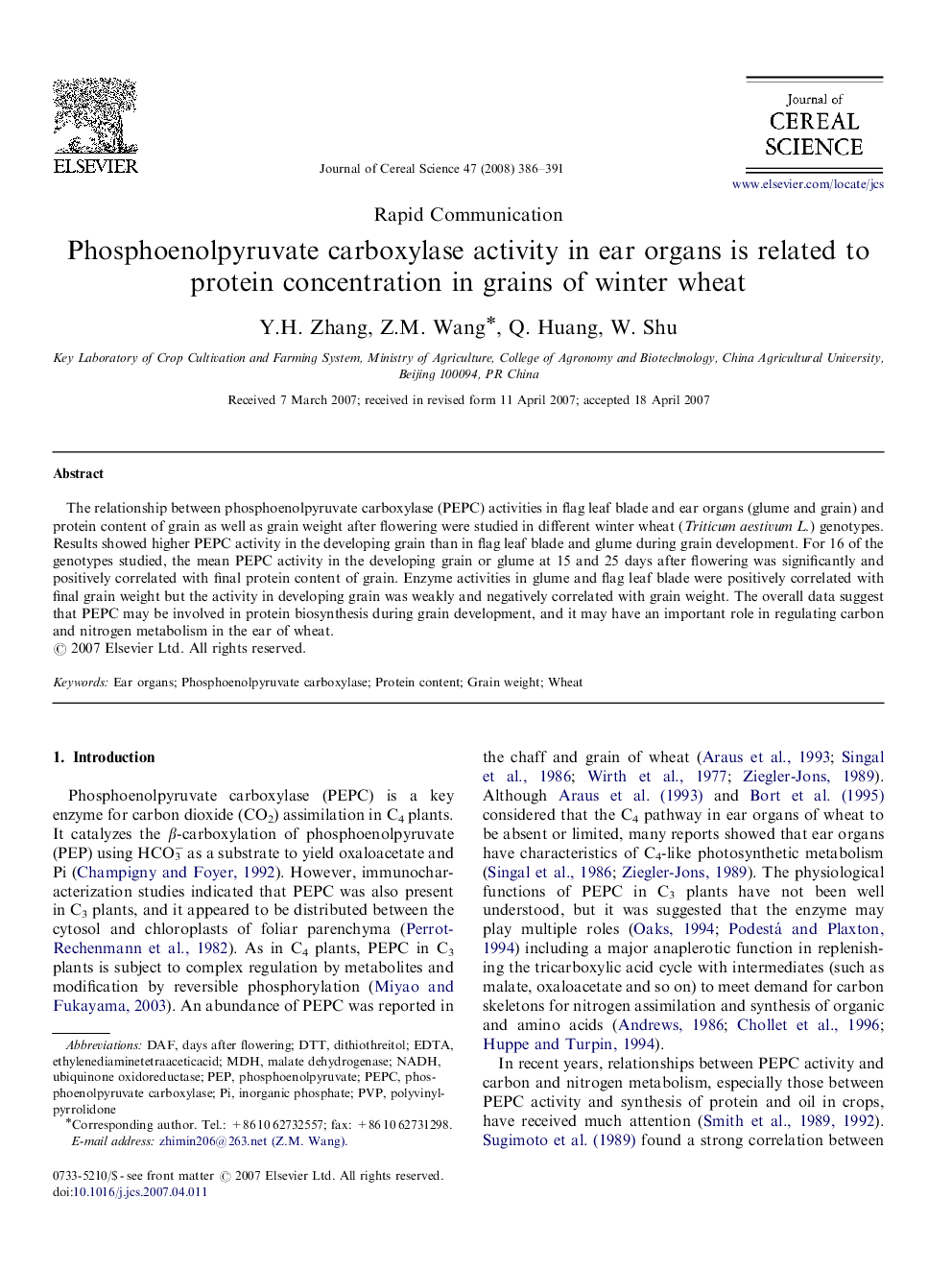| Article ID | Journal | Published Year | Pages | File Type |
|---|---|---|---|---|
| 4516660 | Journal of Cereal Science | 2008 | 6 Pages |
The relationship between phosphoenolpyruvate carboxylase (PEPC) activities in flag leaf blade and ear organs (glume and grain) and protein content of grain as well as grain weight after flowering were studied in different winter wheat (Triticum aestivum L.) genotypes. Results showed higher PEPC activity in the developing grain than in flag leaf blade and glume during grain development. For 16 of the genotypes studied, the mean PEPC activity in the developing grain or glume at 15 and 25 days after flowering was significantly and positively correlated with final protein content of grain. Enzyme activities in glume and flag leaf blade were positively correlated with final grain weight but the activity in developing grain was weakly and negatively correlated with grain weight. The overall data suggest that PEPC may be involved in protein biosynthesis during grain development, and it may have an important role in regulating carbon and nitrogen metabolism in the ear of wheat.
